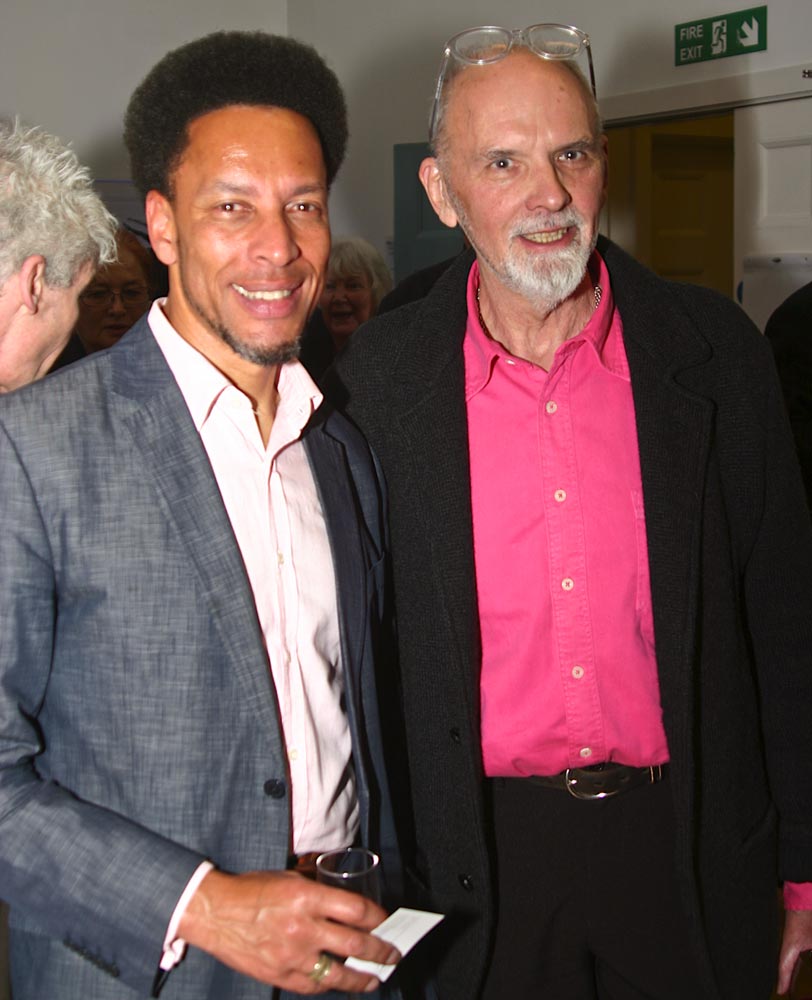
A Celebration of Bob Lockyer
Bob Lockyer’s Birthday Bash – a special gala evening
London, The Place
13 Arpil 2012
http://www.theplace.org.uk
Years ago, I was a naive, incompetent trainee in BBC TV’s Music & Arts Department when Bob Lockyer was confirming his reputation as the leading director/producer of TV films about dance. I watched in admiration as he directed recordings in the BBC’s huge studios in Shepherd’s Bush, moving calmly from banks of video monitors in the control room to the action on the studio floor – a bewildering change of perspective. His was to be an over-40-year career within BBC television, when that organisation was still a creative force; then he passed on his experience to broadcasters in other countries.
Excerpts from films or videos that he had brought about were shown on a screen in The Place foyer (and on its website) in honour of his 70th birthday. There in black and white was a recording of the dance of Death from Kurt Jooss’s The Green Table. The cover of Friday’s programme leaflet had an image from the TV rehearsal, with young Bob appearing to take a penknife to Death’s extended hoof: in fact, he was moistening Winfried Kirsh’s boot to prevent his slipping on the white-painted floor.

In quick succession on Bob’s archive reel came clips of Rosie Lee’s Boy; juvenile Jonathan Burrows and Simon Rice in Hymns; Merce Cunningham and Wayne McGregor, decades apart but looking surprisingly similar, as though galvanised by electric shocks; Siobhan Davies and other members of LCDT in Robert Cohan’s Waterless Method of Swimming Instruction; glimpses of Cohan’s Cell, Stabat Mater, Forest, Nympheas – just a sample of creations Bob brought to the small screen. He was co-founder with the Arts Council of the Dance for the Camera series of short films, many of which won awards for their choreographers and directors.
Bob has played an important role in this country’s dance scene, supporting organisations such as Dance UK and DanceEast and sponsoring commissions. Though that might make him sound a dictatorial committeee member, it’s misleading. He’s been above all an unassuming enabler, a good friend to choreographers, dancers and administrators. It’s typical of him to celebrate his seventieth birthday with five commissions, making new works happen alongside revivals of seldom-seen ones. He asked Eddie Nixon, artistic director of The Place, to set up a programme (referred to familiarly as ‘Bob’s Bash’) whose proceeds would go to two funds: the Royal Philharmonic Society Drummond Fund, honouring Bob’s late partner John Drummond, and The Place’s Pioneering Fund for new works. As Bob wrote in his welcome to the special evening: ‘Together, we can help make sure that dance and music continue to explore new territory and take new risks. It’s the best birthday gift I could wish for’.
The first two pieces, lasting just five minutes each, involved dance students and tyro choreographers. Drone, by Andy Macleman, was a duet for himself and Drew Hawkins, both students at the London Contemporary Dance School. Restrained and ritualistic, it examined co-dependence between two monk-like figures. Sebastian Goffin from the Royal Ballet School choreographed Papillon to Dvorak’s Silent Woods, played live by Rebecca Herman (cello) and Andrew Saunders (piano). The musicians were supposedly rehearsing in Kensington Gardens while an ardent young man, Skyler Martin, courted his girlfriend, Mayara Magri, on a park bench. A welcome chance to see (neo) classical ballet on The Place stage, the pas de deux was fresh and charming.
Mark Baldwin contributed Prayer for four women from the Rambert Dance Company to Julian Anderson’s music, played by violinist Stephen Upshaw. The music determined the structure of the piece, with Angela Towler as the senior figure supported by three novices. After a sequence of solos, all four came together to listen to the violinist, leaving the lasting impression to the music.
Richard Alston’s Isthmus, named for its (recorded) music by Jo Kondo, started as a quartet until Elly Braund intervened as an amiable outsider. A succinct study, it reminded me of Alston’s 1977 Rainbow Bandit, in which Michael Clark was similarly outstanding. Coincidentally, the next piece, performed by Charlie Morrissey, was set to repeated spoken phrases, as Rainbow Bandit was. Orlando Gough’s soundscore told us ‘The way it works is…. This happens because this happens…’, as Morrissey flickered between light and darkness, caught in what appeared to be early film frames. Siobhan Davies had selected for Morrissey images from Etienne-Jules Moray’s 19th century attempts at chronophotography, capturing movement on cameras. Maybe this was Sue Davies’ tribute to Bob’s first recordings of dance on clumsy videotape 2 inches wide, decades before digital cameras came into use.
An excerpt from Robert Cohan’s In Memory (1989) followed, performed by five dancers from the Richard Alston Dance Company. In Memory was one the last pieces Cohan (now 87) made before he left LCDT after more than 20 years as its director. Alston revived it for his company last year. A quartet of men in shades of blue was interrupted by a woman in red, Nancy Nerantzi, who claimed Pierre Tappon for a passionate duet to Hindemith’s Sonata for unaccompanied viola, played live by Alistair Scahill.
A 10-minute section from Alston’s joyous Shuffle It Right ended the programme to Hoagy Carmichael’s music, leaving us wanting more. It was preceded by a commission from Robert Binet, newly appointed choreographic apprentice with the Royal Ballet under Wayne McGregor’s tutelage. Lake Maligne, whose title refers to a painting by Canadian artist Lawren Harris, was sensationally danced by Daniela Neugebauer from McGregor’s Random Dance company. Vulnerable and hyper-alert, she expressed the loneliness and angst of an adolescent – a female faune in a wintery landscape.
Bob Lockyer must be truly proud of his birthday gift: not a dud amongst the commissions he has brought about, sending three young choreographers on their way to a promising future.













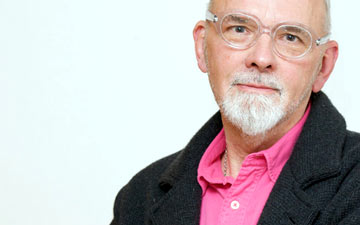
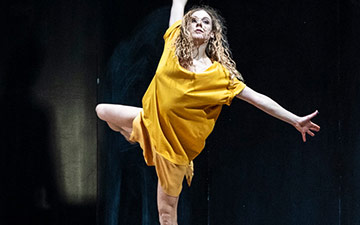
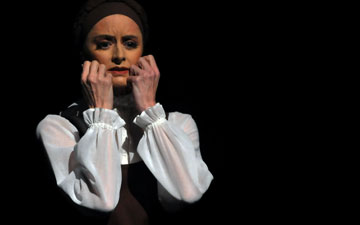
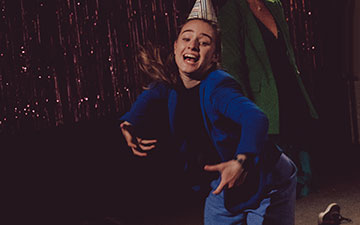
You must be logged in to post a comment.